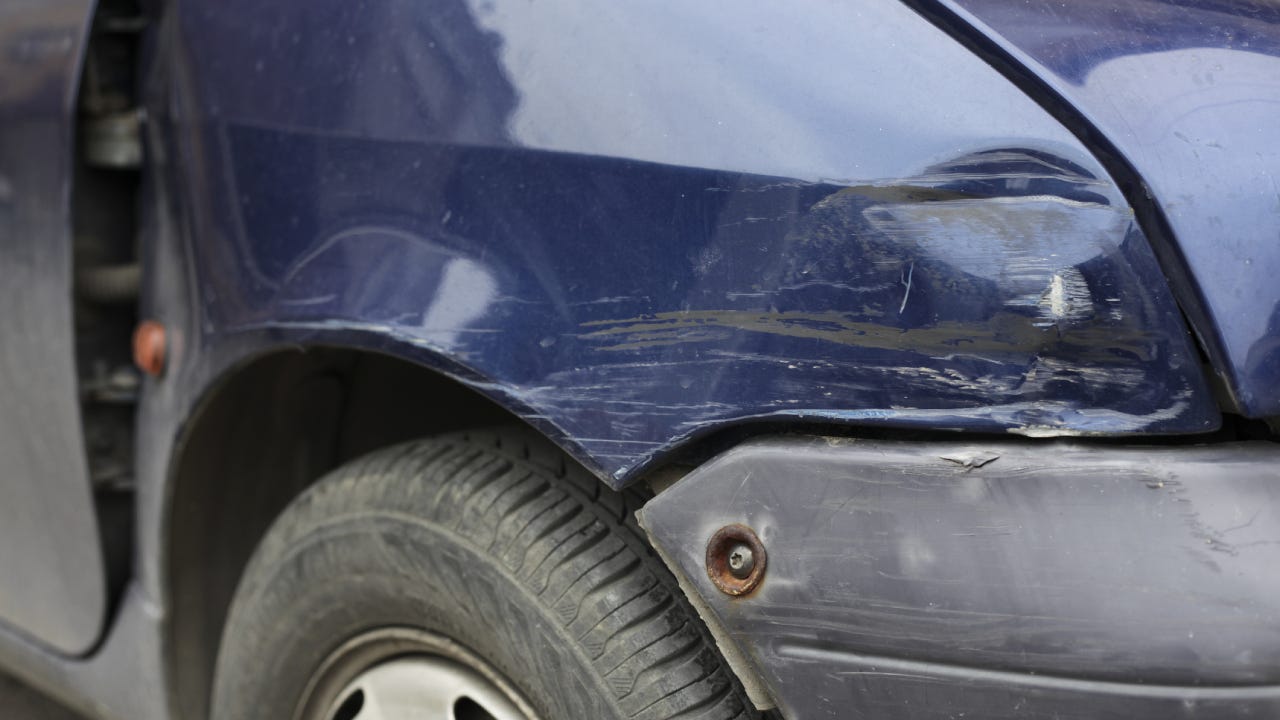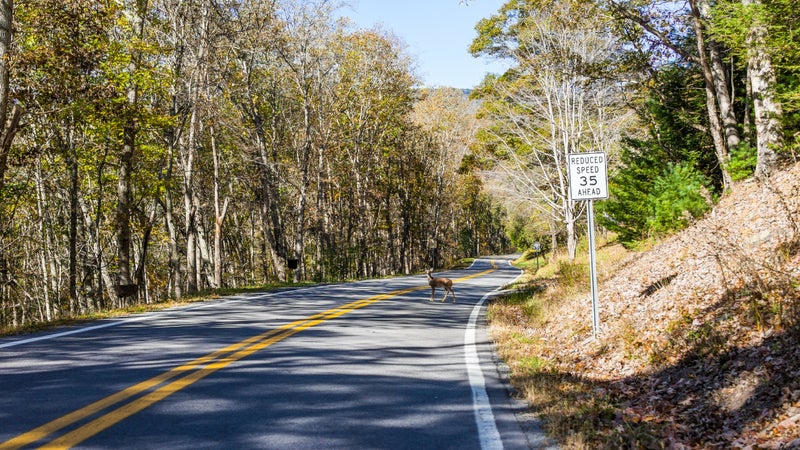Car insurance after a hit-and-run in West Virginia

The Bankrate promise
At Bankrate, we strive to help you make smarter financial decisions. To help readers understand how insurance affects their finances, we have licensed insurance professionals on staff who have spent a combined 47 years in the auto, home and life insurance industries. While we adhere to strict , this post may contain references to products from our partners. Here's an explanation of . Our content is backed by Coverage.com, LLC, a licensed entity (NPN: 19966249). For more information, please see our .
Our writers and editors used an in-house natural language generation platform to assist with portions of this article, allowing them to focus on adding information that is uniquely helpful. The article was reviewed, fact-checked and edited by our editorial staff prior to publication.
In West Virginia, a hit-and-run accident is defined as leaving the scene of an accident without stopping to fulfill your legal obligations. Some drivers flee the scene because they do not have a valid license or active insurance, while others leave out of panic. However, West Virginia hit-and-run accidents are considered serious moving violations and, in some cases, can lead to a felony charge. Bankrate’s insurance editorial team is here to explain what to do as a victim of a hit-and-run and why it’s important to not leave the scene of an accident.
Hit-and-run laws in West Virginia
West Virginia has very strict laws when it comes to hit-and-run incidents. According to West Virginia’s Code § 17C-4-2, drivers must meet certain obligations when involved in a car accident. Under Erin’s Law, a car accident where someone has sustained injury or death, the driver of any vehicle involved in the car crash must do the following:
- Stop as close to the scene of the accident as possible
- Render aid to injured parties if they are able until authorities arrive
- Provide their name, a valid phone number, year, make, model and the last four digits of the vehicle identification number of the car they are driving
- Show proof of financial responsibility
The penalties for leaving the scene of an accident in WV can be quite severe. If you leave the scene of an accident causing injuries or death, you could face an automatic felony. Penalties can range from a misdemeanor, which can include up to a year in jail and a $1,000 fine, to a felony that could result in up to five years in prison and a $5,000 fine. In addition, your driver’s license may be suspended, requiring you to pay a reinstatement fee. The severity of these penalties depends on the extent of injuries, deaths, or property damage involved in the accident.
How does a hit-and-run affect car insurance in West Virginia?
If you are involved in a hit-and-run and get caught, your car insurance rates are likely to increase significantly. According to Bankrate’s data analysis from Quadrant Information Services, a single at-fault accident can increase the rate of full coverage car insurance by an average of 35 percent above the average cost of car insurance in West Virginia. However, a hit-and-run is often considered more severe than a regular at-fault accident, which means the insurance consequences could be even higher.
| Full coverage | Minimum coverage | |
|---|---|---|
| Average cost of car insurance in West Virginia | $1,926 | $499 |
| Average cost of car insurance in West Virginia after an at-fault car accident | $2,609 | $687 |
| National average cost of car insurance | $2,314 | $644 |
| National average cost of car insurance after an at-fault accident | $3,283 | $927 |
Aside from receiving a ticket for fleeing the scene of an accident, you could also receive additional tickets for speeding or any other violation you incurred at the time of the accident. If you have multiple infractions on your license, you may be considered a high-risk driver, resulting in higher fees and a possible policy cancellation. A hit-and-run conviction can affect your premium rates for at least three years, which can make it hard to find cheap car insurance companies.
What to do after a hit-and-run in West Virginia
If you’re involved in a West Virginia hit-and-run accident, it’s critical to know the appropriate steps to take to protect your health and your financial interests. Here’s what you should do:
- Check for injuries: First, assess your physical condition and that of any passengers. If anyone requires medical assistance, call 911 immediately.
- Report the accident: Report the incident to the police, regardless of whether there are visible injuries or not. Cooperate fully with the police and provide them with all the necessary information, including your insurance details.
- Gather evidence: While waiting for the police and emergency services to arrive, start gathering evidence. This could include taking photos of the damage to your vehicle, writing down any details you remember about the other vehicle (like its color, model or license plate number), and collecting contact information of any witnesses.
- File a claim: Contact your insurance company to file a claim as soon as you are able to do so. You can call the claims department or submit a claim through the carrier’s mobile app. The sooner the claim is filed, the sooner you can have your car repaired.
Frequently asked questions
-
-
West Virginia car insurance law requires auto insurance companies to offer higher limits of uninsured and underinsured motorist coverage (UM/UIM) to all policyholders. While drivers must maintain the required UM limits of 25/50/25, they can reject UIM coverage. If you are the victim of a hit-and-run in WV, the uninsured motorist property damage (UMPD) portion of your UM coverage can pay to replace or repair your car. A UMPD claim is paid out to either the limit of the policy coverage or the actual cash value of the vehicle, whichever comes first. Additionally, UMPD can cover personal property inside the car that was damaged due to the accident.
-
The average cost of car insurance in West Virginia is $1,926 per year for full coverage and $499 per year for minimal coverage. Your policy cost varies based on several factors, including the driver’s age, driving history and the type of coverage they choose. Therefore, it’s recommended to get quotes from multiple insurance providers to find the best rate.
-
West Virginia is not a no-fault car accident state. It is actually an ‘at-fault’ or ‘tort’ state, which means that the driver who caused the accident is generally responsible for any resulting injuries or property damage. Negligence plays a strong part in compensation after a car accident. West Virginia is a modified comparative negligence state, so drivers must be less than 51 percent at fault in order to receive a claim payout from the other driver’s insurance company. Unlike in no-fault states, drivers in West Virginia have the right to sue for compensation for even minor medical costs.
-
West Virginia law requires you to promptly report any accident causing injuries, fatalities or property damage exceeding $1,000 to the police. While the term ‘promptly’ is not clearly defined, it’s recommended to report as swiftly as possible to avoid potential criminal charges or other penalties. For incidents that cause less than $1,000 in property damage, the immediate reporting rule may not apply, but it’s still essential to evaluate the circumstances and involve law enforcement if needed.
-
The best car insurance company in West Virginia depends on your individual needs and circumstances. However, some of WV’s top-rated car insurance companies are Geico, State Farm, USAA, Nationwide and Erie. These companies were selected based on a variety of factors, such as customer satisfaction, average premium rates and unique features that cater to different driver needs. However, the best way to find the right carrier for your insurance needs and budget is to compare quotes from several carriers.
-
Methodology
Bankrate utilizes Quadrant Information Services to analyze April 2024 rates for all ZIP codes and carriers in all 50 states and Washington, D.C. Rates are weighted based on the population density in each geographic region. Quoted rates are based on a single, 40-year-old male and female driver with a clean driving record, good credit and the following full coverage limits:
- $100,000 bodily injury liability per person
- $300,000 bodily injury liability per accident
- $50,000 property damage liability per accident
- $100,000 uninsured motorist bodily injury per person
- $300,000 uninsured motorist bodily injury per accident
- $500 collision deductible
- $500 comprehensive deductible
To determine minimum coverage limits, Bankrate used minimum coverage that meets each state’s requirements. Our base profile drivers own a 2022 Toyota Camry, commute five days a week and drive 12,000 miles annually.
These are sample rates and should only be used for comparative purposes.
Incidents: Rates were calculated by evaluating our base profile with the following incidents applied: clean record (base) and at-fault accident.

